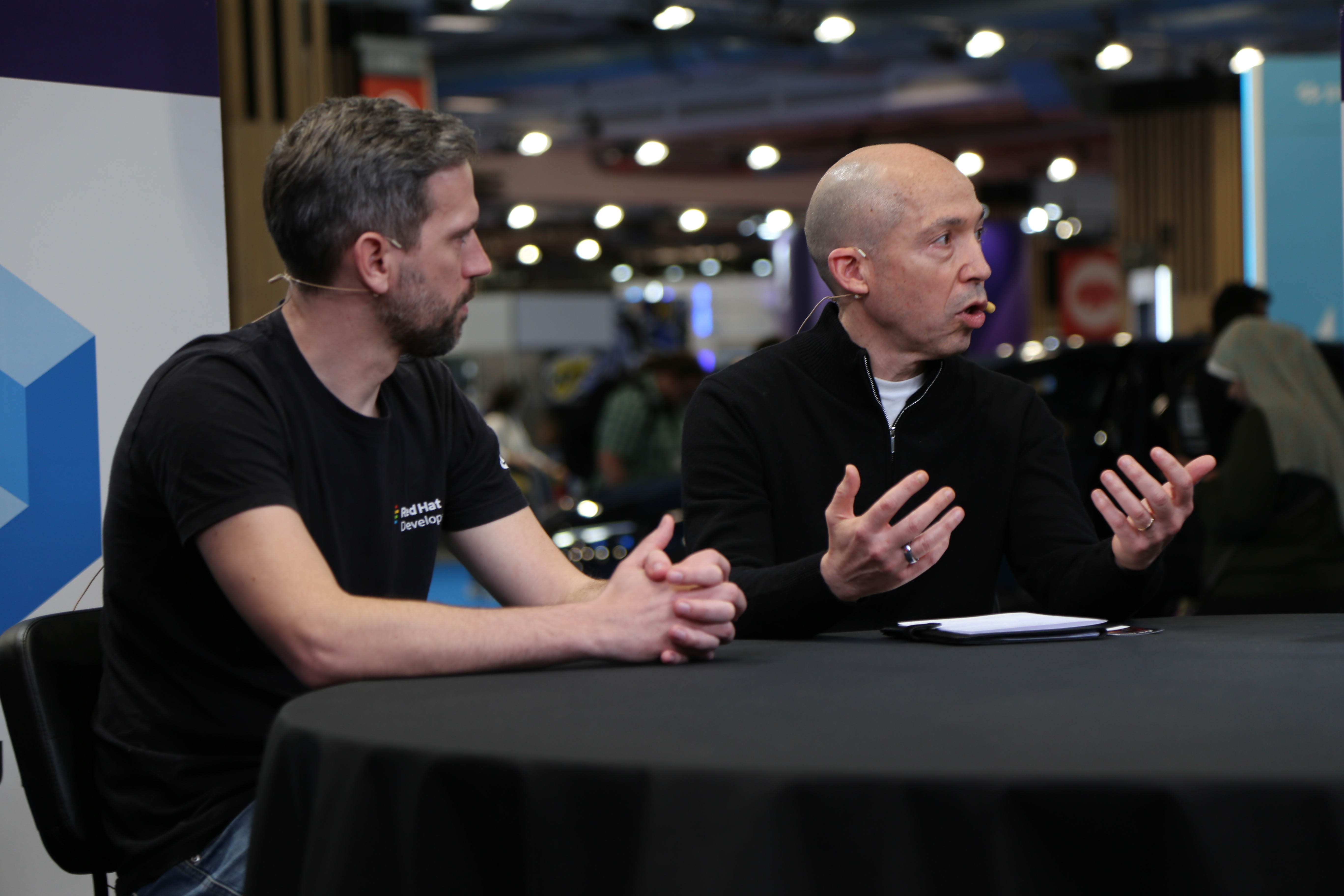 INFRA
INFRA
 INFRA
INFRA
 INFRA
INFRA
Making developers’ lives easier has become a necessity in the current enterprise world because issues, such as the cognitive load headache, have to be addressed since they trigger low productivity.
Nevertheless, attaining this objective is not a walk in the park, because the stack is becoming more difficult. This is why Red Hat Inc. is delving deeper into developers’ needs through UX research, as well as offering easy-to-use tools, such as Podman Desktop, which presents a graphical interface for the seamless management of pods, images and containers, according to Ignacio Riesgo (pictured, right), senior director of developer marketing and strategy at Red Hat.
“The daunting stat is 75% of the developers feel cognitive load, and the problem is this is only increasing,” Riesgo said. “Developers used to work and used to have a good connection with the platform engineers. Suddenly, there is a new team called the data scientists that are bringing the AI models, and developers are like, ‘Who are you? What are you giving to me?’ It’s all about cognitive load and how to reduce that, and that’s why it’s so important that you create books, you train them, events like this … pushing tools like Podman Desktop.”
Riesgo and Kevin Dubois (left), principal developer advocate at Red Hat, spoke with theCUBE principal analyst Rob Strechay and host Savannah Peterson at KubeCon + CloudNativeCon Europe, during an exclusive broadcast on theCUBE, SiliconANGLE Media’s livestreaming studio. They discussed why the cognitive load headache is a major pain point for developers and how Red Hat fits into the picture when dealing with it. (* Disclosure below.)
Given that software supply chain attacks have increased at an annual rate of 742%, an out-of-the-box approach is needed, according to Riesgo. As a result, scrutinizing whether the underlying code is secure is critical, as well as looking at every development phase since the overall picture is having trustworthy software and securing the supply chain.
“Over 700% more attacks a year. That’s insane … we are creating the code, and then you don’t know which of those pieces is secure,” Riesgo said. “You need to ensure that the software that you’re creating is secure. The first thing is you need to be able to analyze the current code that you are using. You need to know if your libraries are secure, if you are reusing the right code, if that piece of code that you took for whatever is secure.”
A new trend is emerging whereby developers have to take a hands-on approach when dealing with security because it is no longer a bolt-on. Nevertheless, this accelerates the cognitive load headache, and Red Hat comes in handy through open-source solutions, since the bigger picture is maximizing developers’ user experience, Dubois pointed out.
“What we saw is that the developers now all of a sudden need to be like security experts … because they have to create their software bill of materials, and they have to find secure images, and they need to scan them,” he said. “That’s so much for the developers. So, one of the things that we’re working on is collaborating with the community. Leveraging open source to help the developers with projects, Sigstore, Fulcio or Falco, and integrating them into easily consumable products.”
Here’s the complete video interview, part of SiliconANGLE’s and theCUBE Research’s coverage of KubeCon + CloudNativeCon Europe:
(* Disclosure: Red Hat Inc. sponsored this segment of theCUBE. Neither Red Hat nor other sponsors have editorial control over content on theCUBE or SiliconANGLE.)
THANK YOU